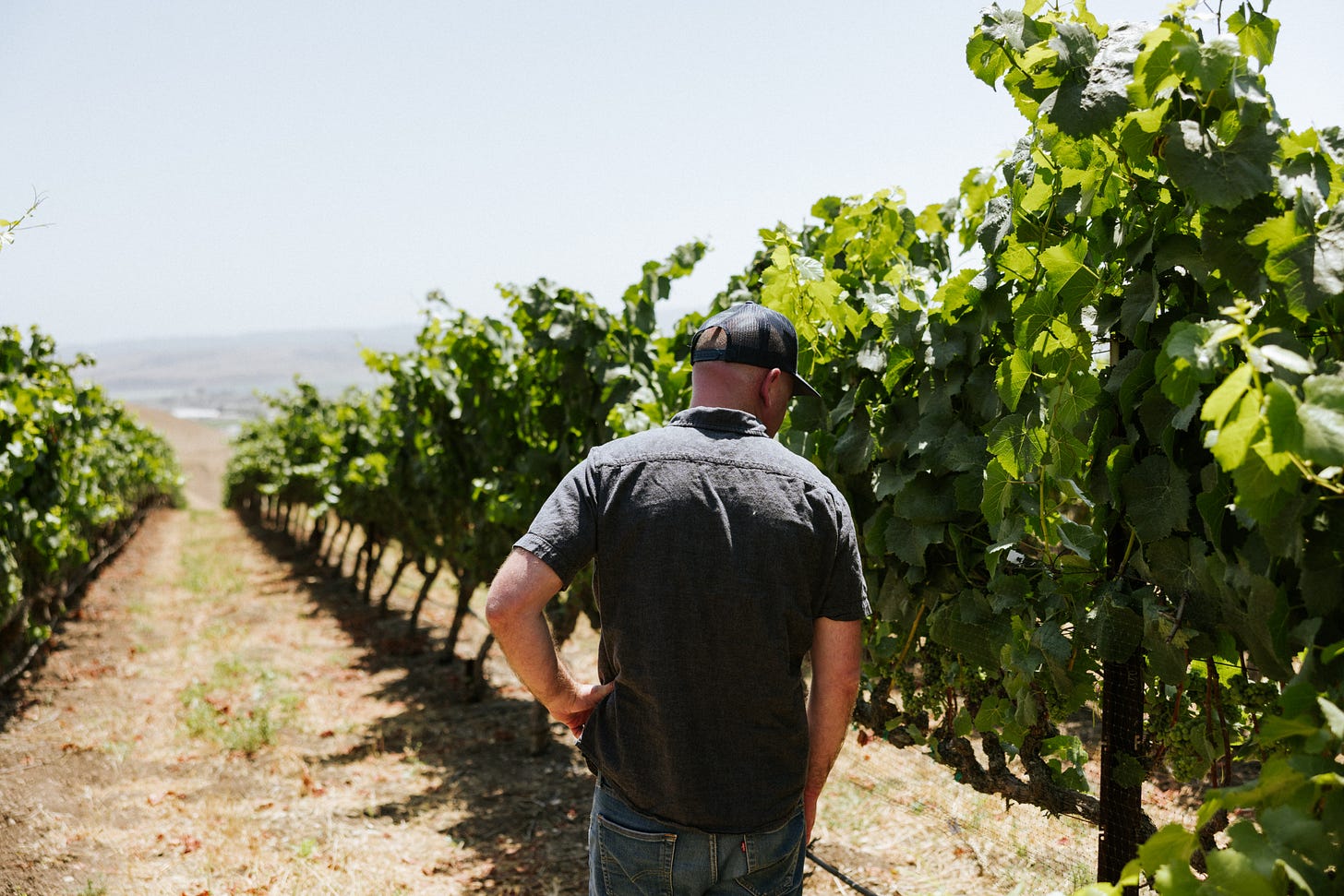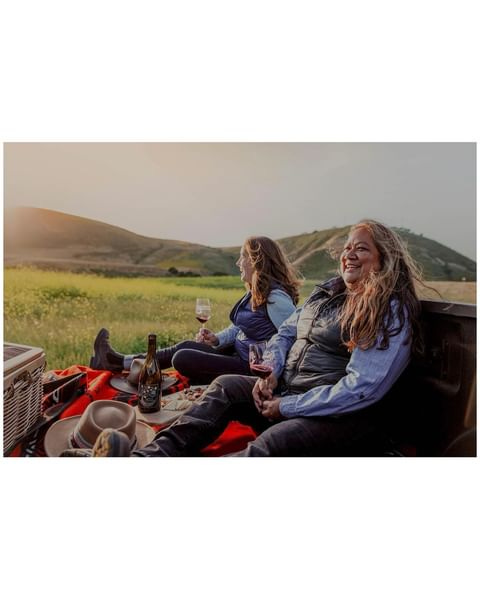Instagram Best Practices for Wineries in 2024
Ten Things To Work Into Your Instagram Strategy
Navigating the ever-changing world of Instagram can be a huge challenge, but some things will remain true regardless of algorithm changes or feature updates.
Today, we will dive into Ten Best Practices for Instagram. We'll cover general tips applicable to any account type as well as specific guidelines for wineries to ensure compliance and engaging storytelling.
Remember, while these tips aim to guide you in your social media strategy, they are not a substitute for legal advice. Always consult with your attorney to ensure your marketing efforts align with current laws, especially in the wine and alcohol industry.
Onward!

General Best practices for any Instagram
Respond quickly (at least within 24 hours):
This is simply good customer service. Respond to your comments, Direct Messages (DMS), and mentions (tags) at least within 24 hours of receiving them but ideally as soon as possible. Yes, even the comments that are just emojis.
BONUS: Respond to comments and messages with the person’s first name (if you can find it in their profile). This adds a really lovely personal touch which people really appreciate.
Post vertical video and photos:
Instagram favors vertical visuals. This format allows for the video or photo to take up more real estate on the screen, which is 1. more comfortable for your viewers and 2. gives your content a better opportunity to be seen. Though you *can* post horizontal photos and videos (and even 1:1 square visuals), these are a little less comfortable to view on a mobile screen and take up less real estate.
For Reels and Stories, the dimensions you want to use are 9:16 and for photos and carousels (multi-slide posts), I recommend using a 4:5 aspect ratio.
If you MUST post a horizontal image, I recommend framing it with a white 4:5 frame using an app like Canva or SCRL, like this:
Always use closed captions:
This is a good idea for the simple fact that it makes your content more accessible to our deaf and hard-of-hearing friends, but if (for some reason) you need more convincing, here’s a fun little stat for you: 92% of consumers watch videos with the sound off.
Therefore, if you are speaking in your stories or videos, you should add closed captions to your videos—or, at the very least, type out a summary on screen.
Make it as easy as possible for your audience to take action:
Forgive me if it feels like I’m stating the obvious here, but when you ask your audience to do something (buy from you, DM you, leave a comment), you should make it as easy as possible for them to do so. Here’s a couple of examples of how to do this:
Use the link sticker on your Instagram stories instead of directing them to the link in your bio
Use an automation tool like ManyChat so you can send links directly to the DMs of viewers who opt-in with a keyword comment (see this in action here)
If you do say “link in bio” in your Instagram post caption, I recommend following that with your @username (e.g. @craftandcluster) to help take them directly there.
The idea here is you want to decrease friction as much as possible for your audience to take action on what you want them to do (especially when there’s a link involved)
Regularly update bio, links, and highlights:
There’s nothing more frustrating than someone telling you to go to the link in their bio for something only to not be able to find that link because they haven’t updated it in a while. I set a reminder for myself to check and update the links in my clients’ bios weekly (and always update them when we have a new post going out).
Be sure to keep your bio updated with the appropriate call to action and keep your highlights up to date as well!
BONUS: while we’re on the subject of links, you can now add up to five links to your Instagram’s link section, which is a much better alternative to LinkTree, as it’s yet another way to reduce friction and steps between your audience and what you want them to do. If you continue to use LinkTree, I recommend listing no more than five links at a time.
Be consistent in your: fonts, filters, brand colors, etc
This is basic branding, but if you want people to know it’s YOU anytime you are posting, be sure to use the same fonts, filters, brand colors, etc, when making your posts.
For example, for a while there, Stolpman was posting exclusively monochrome visuals on their feed so it was immediately noticeable it was them posting (I have thoughts on the monochrome feed look which I’ll share another day, but suffice it to say, I always knew it was them posting). And Sea Creatures Wine often uses the same bold title font in their Instagram stories.
I recommend keeping a screenshot of your brand colors on your phone so you can easily use the color picker tool to grab consistent colors when you make your stories.
Use the same fonts on your stories and reels.
And if you hire a photographer or videographer, talk to them about editing your visuals to have continuity with your overall visual presence.
Tag the original creator in the caption and the post:
As a photographer, this one hits really close to home for me. If you haven’t paid for the photo or video you are posting to your feed, you MUST do two things:
Ask the original creator of the photo or video if you have their consent to use the photo or video on your feed; and,
Tag the original creator of the photo or video in BOTH the caption and the post itself.
BONUS: It’s nice for us photographers & videographers when you tag us in the works we made for you, even when you paid for them. Your viewers are often curious, plus we love word of mouth!
Wine Specific Best Practices
The following best practices are specific to wine, beer, and other alcoholic beverage brands that must follow tied-house laws in their marketing (including in social media). For more detailed information on how to stay compliant on social media, you can read this DTC Wine Symposium presentation from 2019 by Tracy Genesen or listen to this podcast episode I did in 2021 with Brian Simas, Attorney at Law.
And again, please remember that I am not a lawyer, nor do I pretend to be one on TV. The following should not be taken as legal advice. Please consult your attorney to know how you can best stay legal on social media!)
—
Don’t use laudatory language about retailers or restaurants in your posts (especially if they sell your wine), and don’t use defamatory language when talking about your competitors
This is another one of those very “does this even need to be said?” things, but don’t talk shit about your competitors, and don’t use laudatory phrases about retailers or restaurants in your posts. This also goes for anything you are reposting to your stories from someone else’s account.
For example, if a wine influencer tags your winery in a post that says “This is the best winery ever! Way better than that other winery who sucks balls!” You *cannot* repost that to your stories as, even though YOU didn’t write that the other winery sucks balls and may not even share that viewpoint, by reposting it, it implies that you do share that viewpoint.
As another example, you cannot make a post talking about how awesome a restaurant that sells your wine is, as that is considered free adverisement and a “thing of value” for that restaurant or retailer.
From my understanding (and, again, please consult your lawyers on this), you*can* share a post telling people that they can find your wine at two or more retailers or restaurants so long as those retailers/restaurants are not affiliated and so long as you aren’t using laudatory words such as (but not limited to) delicious, awesome, amazing, fantastic, etc. You can only list those restaurants/retailers along with their addresses, nothing else. Not even the retail prices they sell your wine at.
Don’t imply wine is healthy (and don’t talk about how it can get you drunk)
This is a TTB-prohibited practice. You cannot make misleading health statements about your wine, including implying that red wine is good for your heart, etc. Technically, you shouldn’t even say things like “Salute” or “Sláinte" in your posts since those words translate to something like “to your health.” I didn’t say it made sense.
In that same vein, you cannot make reference to wine having intoxicating qualities, like saying something like, “we’re about to get lit, fam!” and then cheersing the screen. And once again, this goes for anything you repost. So if a fan or influencer makes a post showing them getting intoxicated with your product, you cannot repost that to your feed or your stories.
Be sure to disclose any material connection between you and an endorser of a brand (i.e. an influencer.)
This is a transparency thing. If you paid an influencer or writer in any way—including giving them a free tasting or sending them bottles of wine to review—they MUST disclose clearly that this is a paid opportunity. You can do this directly in the app by adding a Paid Partnership label at the top of the post or clearly start that this is a sponsored post. See this post I did in partnership with Louis Jadot for an example of how this looks in practice.
By following these best practices, you can enhance your winery's Instagram presence, engage more effectively with your audience, and ensure compliance with advertising standards. Remember, the goal is to create a welcoming and engaging online community that reflects the spirit and values of your brand.
Need help with what you learned here? I offer 1:1 Instagram Strategy Sessions and Monthly Consulting Services to help give you help specific to you and your wine brand. Learn more about these services here!



